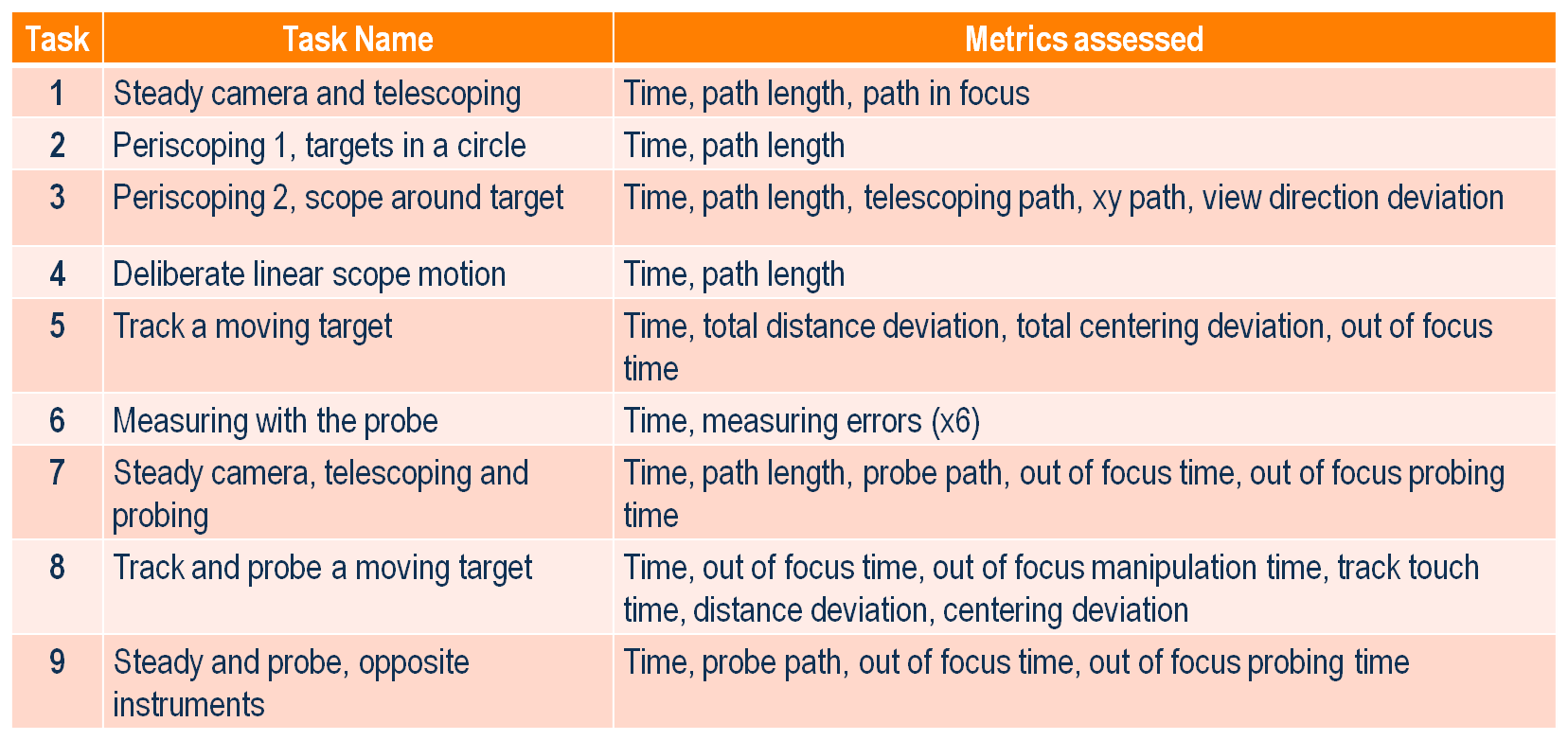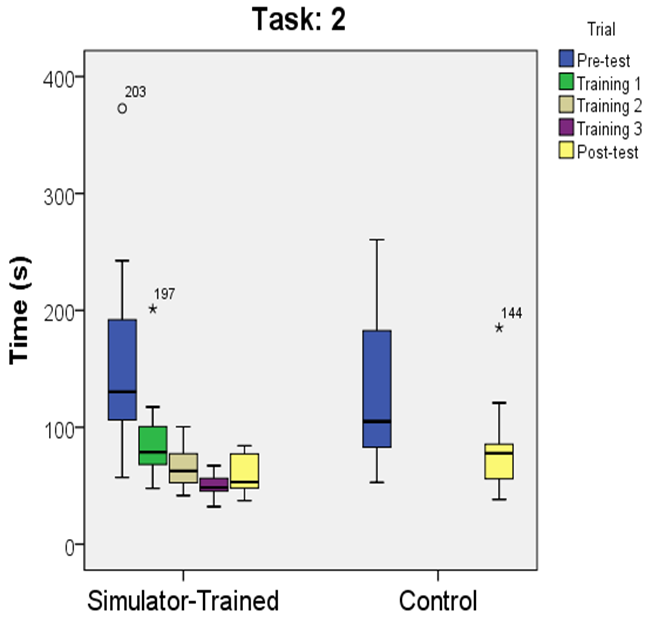Presenting Author:
Kevin Wang, B.S.
Principal Investigator:
Rachel Frank, M.D.
Department:
Orthopaedic Surgery
Keywords:
Arthroscopy, Simulation, Training, Residency
Location:
Third Floor, Feinberg Pavilion, Northwestern Memorial Hospital
E23 - Education
Effect of Simulator Training on Performance: A Randomized Controlled Trial
Introduction: With restrictions in work hours and an increasing demand for operating room efficiency, there have been recent have created a need for alternative methods of surgical skill development. The purpose of this study is to determine the impact of simulation training on a novel, virtual reality arthroscopic simulator on ability to perform basic triangulation tasks. Methods: Twenty-eight novice trainees at a single institution were randomized to either simulator training (N=14) using the ArthroVision Virtual Reality Simulator (Swemac, Sweden) or no simulator training (control group, N=14). All subjects pre-tested on simulator by completing 9 tasks ranging from camera steadying tasks to probing structures. The training group practiced all 9 tasks once weekly for 3 consecutive weeks. The control group did not train and had no access to simulator. Both groups completed a post-test consisting of all 9 simulator tasks after the training period was completed. Results: For all tasks except task 5 (in which completion time was relatively fixed), task completion time was highly and significantly correlated to other task-specific metrics. Post-test task completion time scores were significantly different between groups for all but task 5 (p < 0.05). Post-test task completion time for each group was significantly different from the respective pre-tests (p < 0.05). There was no significant change in task completion time between the final 3 trials (2 training sessions and the post-test) for tasks 3, 4, 5, 6, and 8. For all other tasks, there was no significant difference in completion time between the last training session and final post-test session. Discussion: There was a significant improvement from pre-test to post-test task completion time in both groups, and the training group had significantly more improvement than the control group. The training group demonstrated a ceiling effect for most tasks.


